Useful properties of blue cabbage, reproduction and care of seedlings
Cabbage has long been one of the most beloved garden plants. However, out of all the richness of varieties, we most often use white or cauliflower, and we undeservedly forget about many other members of the family.
Among them - red cabbage, which is also called blue because of the unusual red-purple color of the leaves. It is a true natural source of vitamins, minerals and antioxidants and can rightfully be called a cure for many diseases.
Content:
- Useful properties of blue cabbage
- General characteristics of blue cabbage
- Reproduction and care of seedlings
- Contraindications to use
Useful properties of blue cabbage
First of all, it must be said about why its leaves have such an unusual color. It is due to the presence of anthocyanin in the cells of the plant - this is a biologically active substance that biologists classify as a flavonoid group. Anthocyanin gives the leaves a wide variety of shades, from pink to purple. This is the reason for the popular name of this species "blue cabbage", its useful properties are also determined by the presence of anthocyanin in the cells.
This substance is a powerful antioxidant that can remove free radicals from the body and prevent the development of cancerous tumors. In addition, it has a beneficial effect on the walls of large vessels and capillaries, improving their performance and providing strength. IN white cabbage the anthocyanin content is much lower, so the blue variety is valued higher.
In addition to anthocyanin, blue cabbage is a source of phytoncides - substances that have antibacterial effects.
That is why it is used in the treatment of serious infectious diseases, in particular tuberculosis. In addition, selenium has a beneficial effect on the functioning of the immune system - this trace element promotes the synthesis of enzymes that help the body to resist various diseases.
Blue cabbage is a source of a number of vitamins and nutrients that the body needs:
- It is a source of plant fiber that supports intestinal motility and improves digestion. Eating cabbage helps fight many diseases of the gastrointestinal tract.
- Blue cabbage contains a large amount of vitamin C - it helps to strengthen the immune system and helps the body fight infections. The content of the "king of vitamins" in blue cabbage is almost 4 times higher than in white cabbage.
- It also contains retinol, better known as vitamin A. It is necessary for the normal functioning of the retina and contributes to the normal functioning of the nervous system.
- It is a source of healthy cholesterol - plant fatty acids that help prevent the development of atherosclerosis. In addition, blue cabbage has a hypotensive effect - it helps to lower blood pressure and enhances the effect of drugs.
- It contains a large amount of potassium and magnesium salts involved in metabolism. Its regular use allows you to normalize the functioning of the nervous system, improve sleep and overall well-being.
- Another important plus is the low calorie content of blue cabbage, which is only 26 kcal per 100 g.This is a great solution for those looking to lose weight and strengthen their body. Dishes made from red cabbage are highly digestible and promote good bowel function.
General characteristics of blue cabbage
Outwardly, red cabbage resembles white cabbage and at first glance differs only in the color of the heads. They have a rounded, less often elongated shape, weighing from 1 to 3 kg. All varieties of blue cabbage are considered late maturing, harvest harvested 160 days after planting.
The heads of cabbage are denser than those of the white-headed variety; the plant has a shortened stem and a powerful branched root.
In the second year of life, it gives the seeds, the fruit is a pod, like all crucifers. Blue cabbage belongs to cold-resistant crops, so it grows well in the middle lane and even in the northern regions. The optimum temperature for successful cultivation is up to +17 degrees, the plants are able to withstand short-term frosts, at which the temperature reaches -8 degrees.
However, it is also resistant to bright sun: when the temperature rises, unlike many other species, red cabbage does not give a flower arrow.
At the same time, the plant is demanding on light: with a lack of sun, it grows worse, and the leaves lose their reddish color and become greenish, while the head of cabbage forms much more slowly, and it will be looser.
The plant needs regular abundant watering, without water it will not be able to form a dense head of cabbage. However, in order to prevent excessive moisture and decay of the roots, cabbage should not be grown in lowlands, it should be placed on a hill.
Reproduction and care of seedlings
Growing blue cabbage is based on the same principles as the white cabbage variety, they can be planted in the same garden or within the same greenhouse:
- Seeds for growing seedlings are planted in rows, planting depth - 1-1.5 cm.
- If the seeds are immediately planted in open ground in a greenhouse, they must first be covered with foil.
- Planting time of seed on seedlings - March 5-20.
- Young plants are transplanted to the garden bed when they have 4-5 true leaves.
- Seedlings are planted in the ground at the end of May; it is recommended to water the seedlings before transplanting them into the ground.
- At the same time, planting is best done on a cloudy day, so that young plants do not die in the hot sun.
- Since the adult plant will be large enough, the distance between the seedlings is 35 cm, and between the rows in the garden is 70 cm.
In the future, throughout the entire period of growth, the plants are regularly watered, earthed, loosened the soil and removed weeds... Timely watering, without it, the plant will not be able to form a full-fledged dense head of cabbage. For full watering, at least 20 liters of water must be poured under each root. It is advisable to loosen the soil more often - this will ensure the flow of air to the roots, and they will not rot.
It is not recommended to constantly grow cruciferous plants in the same place.
A much larger harvest can be obtained by planting cabbage where it was previously grown onion, herbaceous perennials, tomato or legumes. Compliance with the rules of agricultural technology will allow you to get larger and denser heads of cabbage with a rich taste. They are mainly eaten fresh; they are not suitable for cooking or salting.
Contraindications to use
Blue cabbage has contraindications. Since it increases gastric secretion, it should not be eaten by people with high acidity. It can cause exacerbation of chronic gastritis, especially with an excessive amount in the diet.
Blue cabbage is contraindicated in pancreatitis and diseases of the small intestine.
It should not be eaten during the recovery period after surgery.Fiber creates a certain strain on the intestines, which it is desirable to avoid until its work is restored after surgery. It can also be contraindicated in case of individual intolerance and allergies, like many other vegetables, it is a fairly common allergen.
For a healthy person, red cabbage is not only safe, but also very useful. Regular consumption will help avoid many diseases and will play an important role in the formation of natural immunity. There are dozens of culinary recipes for cooking, in addition, it is widely used in traditional medicine.
More information can be found in the video.



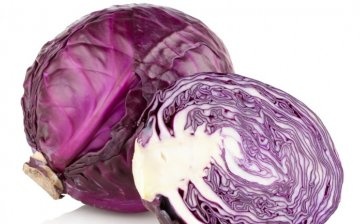
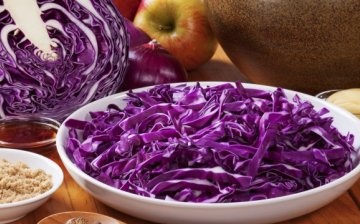
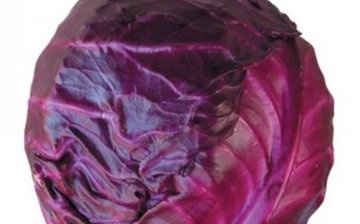
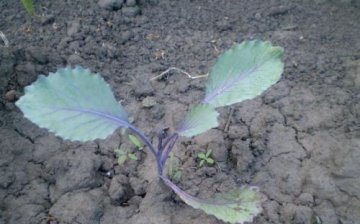
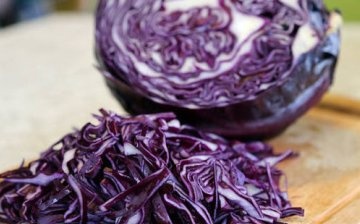






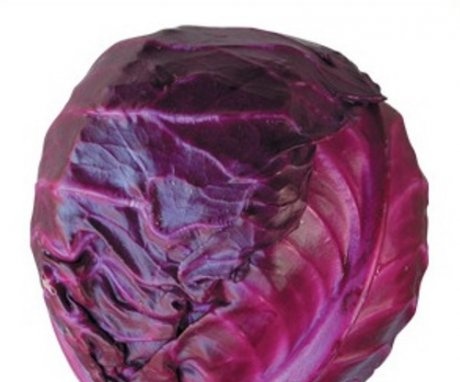
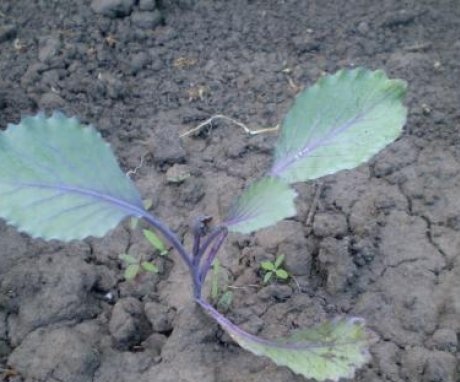
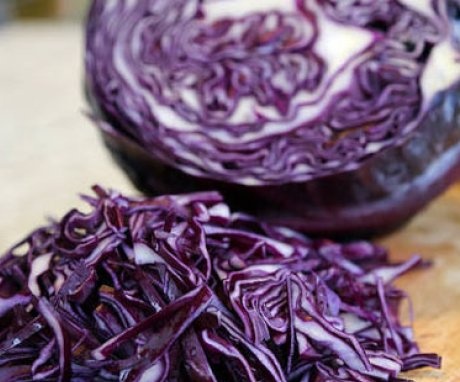
I never even imagined that so much work and attention is needed in order to grow blue cabbage. It seemed to me that it was easy to spray from insects, like the usual one. And here is just the whole procedure.
We love to eat cauliflower. Well, it was not possible to grow it in my garden. as she tried to grow from seeds, she barely barely hatched, poor and as a result did not give a harvest. She was quite small.